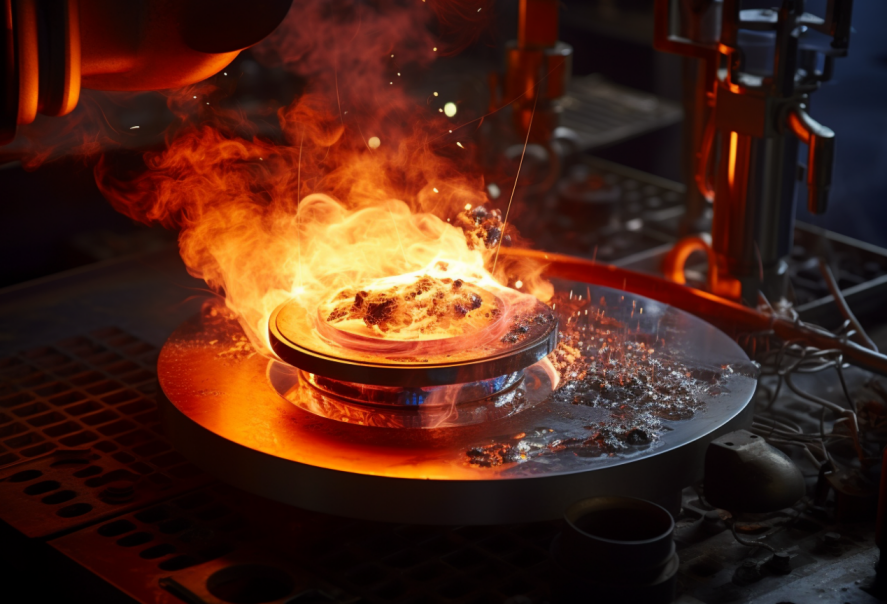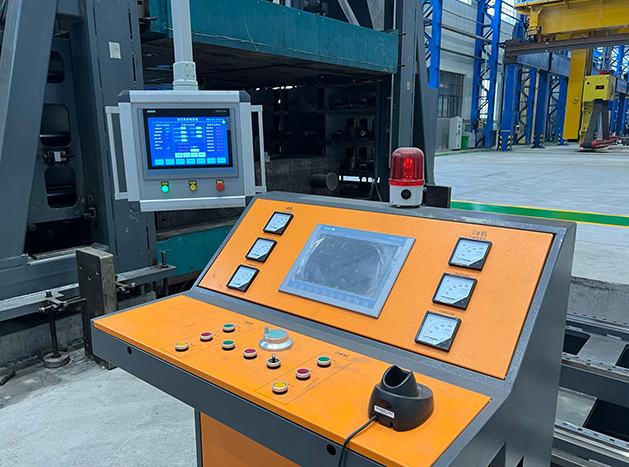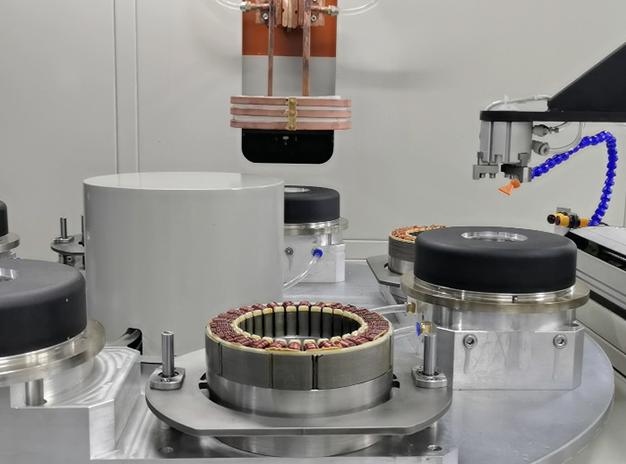What Are the Key Advantages of Small Induction Melting Furnaces Over Traditional Methods?
In the dynamic domain of metallurgy and material science, evolution is constant, spurred by innovation and the pursuit of efficiency. Amidst a plethora of tools and technologies, the small induction melting furnace stands out as a stalwart, reshaping the landscape of small-scale melting processes.
Market Status: A Glimpse into the Landscape
1.1 Exploring Demand Trends
In recent years, the market for small induction melting furnaces has witnessed a notable uptick in demand. This surge can be attributed to several factors, including advancements in technology, the burgeoning growth of industries reliant on precise melting processes, and the increasing emphasis on efficiency and sustainability.
1.2 Key Players and Manufacturers
Within this burgeoning market, Taizhou Hongkang Electric Co., Ltd. has emerged as a prominent player, offering cutting-edge solutions tailored to the needs of diverse clientele. Specializing in the design and production of small induction melting furnaces, Taizhou Hongkang Electric Co., Ltd. has garnered acclaim for its commitment to quality, innovation, and customer satisfaction.
1.3 Global Penetration
The demand for small induction melting furnaces transcends geographical boundaries, with their utility recognized across a spectrum of industries spanning automotive, aerospace, jewelry making, and beyond. This global penetration underscores the versatility and indispensability of these furnaces in various applications.
The Growing Needs: Addressing Industry Challenges
2.1 Precision and Control
In industries where precision is paramount, such as aerospace and electronics, the ability to exert precise control over the melting process is indispensable. Small induction melting furnaces excel in this regard, offering unparalleled control over temperature, alloy composition, and melting rate, thereby ensuring consistency and uniformity in the final product.
2.2 Sustainability and Efficiency
In an era marked by growing environmental consciousness, sustainability has emerged as a pivotal consideration across industries. Small induction melting furnaces, characterized by their energy efficiency and minimal environmental impact, align seamlessly with this ethos. By minimizing energy consumption and reducing emissions, these furnaces facilitate sustainable manufacturing practices without compromising on performance.
2.3 Flexibility and Adaptability
The dynamic nature of modern manufacturing demands tools and technologies that are not only efficient but also adaptable to evolving requirements. Small induction melting furnaces, with their modular designs and customizable features, offer unparalleled flexibility, enabling seamless integration into diverse production processes. Whether tasked with melting small batches of precious metals or facilitating large-scale industrial operations, these furnaces prove to be a versatile solution.
Why Small Induction Melting Furnaces: A Smart Choice for Your Project Needs
3.1 Precision Redefined: Leveraging Advanced Technology
At the heart of every small induction melting furnace lies advanced technology, meticulously engineered to deliver precision and performance. By harnessing electromagnetic induction, these furnaces achieve rapid and uniform heating, ensuring precise control over the melting process. Whether melting ferrous or non-ferrous metals, alloys, or even exotic materials, the inherent precision of induction heating confers a competitive edge, enabling manufacturers to achieve unparalleled levels of quality and consistency.
3.2 Simplicity and Ease of Use: Streamlining Operations
In an era characterized by complexity, simplicity emerges as a prized virtue. Small induction melting furnaces embody this ethos, offering intuitive interfaces and user-friendly controls that streamline operations and minimize downtime. With features such as programmable temperature profiles, automatic monitoring systems, and remote access capabilities, these furnaces empower operators to optimize their processes with minimal effort, thereby enhancing productivity and efficiency.
3.3 Space-Efficient Design: Maximizing Utility
In industries where real estate comes at a premium, space-efficient design is imperative. Small induction melting furnaces, characterized by their compact footprint and modular construction, optimize space utilization without compromising on performance. Whether deployed in cramped workshops or integrated into existing production lines, these furnaces adapt seamlessly to spatial constraints, enabling manufacturers to maximize utility without incurring significant overhead costs.
Challenges in Traditional Melting Processes
Traditional melting processes in industries such as metalworking and foundries have long grappled with various challenges. These challenges range from inefficiencies in energy consumption to environmental concerns and operational limitations.
4.1 Energy Consumption and Cost
One of the foremost challenges faced by industries utilizing traditional melting furnaces is the high energy consumption associated with the melting process. Conventional methods often involve significant energy losses due to radiation, convection, and conduction, leading to inflated operational costs.
4.2 Environmental Impact
Beyond energy consumption, traditional melting processes can also have adverse environmental effects. Many conventional furnaces rely on fossil fuels or electricity generated from non-renewable sources, contributing to carbon emissions and environmental degradation.
4.3 Operational Limitations
Moreover, traditional melting furnaces often impose operational limitations, such as slow heating rates, inconsistent temperature control, and limited flexibility in accommodating diverse materials. These constraints hinder productivity and restrict the range of applications for which such furnaces can be effectively utilized.
Small Induction Melting Furnaces: Addressing Industry Challenges
In response to these challenges, small induction melting furnaces have emerged as a transformative solution, offering a host of benefits that mitigate the shortcomings of traditional melting processes.
5.1 Enhanced Energy Efficiency
One of the most significant advantages of small induction melting furnaces is their exceptional energy efficiency. Unlike conventional furnaces, which rely on resistive heating or combustion, induction furnaces utilize electromagnetic induction to generate heat directly within the material. This targeted heating approach minimizes energy losses and results in significantly lower energy consumption, translating into cost savings for industries.
5.2 Environmental Sustainability
In addition to improved energy efficiency, small induction melting furnaces also boast environmental sustainability credentials. By reducing reliance on fossil fuels and optimizing energy usage, these furnaces help mitigate carbon emissions and minimize environmental impact. Furthermore, the absence of combustion processes eliminates emissions of harmful pollutants, promoting cleaner and greener manufacturing practices.
5.3 Precision and Control
Another key advantage of small induction melting furnaces lies in their superior precision and control over the melting process. Through advanced technology and sophisticated control systems, these furnaces offer precise temperature regulation, ensuring uniform heating and optimal melting conditions. This level of control not only enhances product quality and consistency but also enables the processing of a broader range of materials with varying melting points and compositions.
Future Needs and Emerging Trends
As industries evolve and demand for efficient, sustainable manufacturing solutions continues to grow, the future outlook for small induction melting furnaces appears promising. Several trends and advancements are shaping the trajectory of this technology, catering to evolving industry needs.
6.1 Miniaturization and Portability
One notable trend in small induction melting furnaces is the ongoing miniaturization and increased portability of these systems. As industries seek greater flexibility and agility in their operations, compact and portable furnaces are gaining traction. These smaller-scale furnaces offer versatility in deployment, allowing manufacturers to optimize space utilization and adapt to evolving production requirements.
6.2 Integration of IoT and Automation
The integration of Internet of Things (IoT) technologies and automation features is another significant trend driving the evolution of small induction melting furnaces. By incorporating sensors, connectivity, and data analytics capabilities, these furnaces enable real-time monitoring, predictive maintenance, and remote control functionalities. This integration enhances operational efficiency, minimizes downtime, and facilitates proactive decision-making, thereby empowering industries to streamline their melting processes and maximize productivity.
6.3 Advancements in Material Science
Advancements in material science are also influencing the development of small induction melting furnaces, particularly in the realm of refractory materials and crucible designs. By leveraging innovative materials and engineering techniques, manufacturers can enhance the durability, thermal conductivity, and chemical resistance of furnace components, thereby extending operational lifespan and improving overall performance.
In Conclusion: Embracing Innovation for a Brighter Future
As industries navigate the complexities of a rapidly evolving landscape, the importance of innovation and efficiency cannot be overstated. Small induction melting furnaces, with their blend of precision, sustainability, and versatility, embody the essence of technological innovation, empowering manufacturers to unlock new realms of possibility. Whether tasked with shaping the future of aerospace engineering or crafting exquisite works of art, these furnaces serve as indispensable tools, driving progress and prosperity in equal measure. As we look towards the horizon, one thing remains abundantly clear: the small induction melting furnace stands as a beacon of ingenuity, illuminating the path towards a brighter, more sustainable future.



